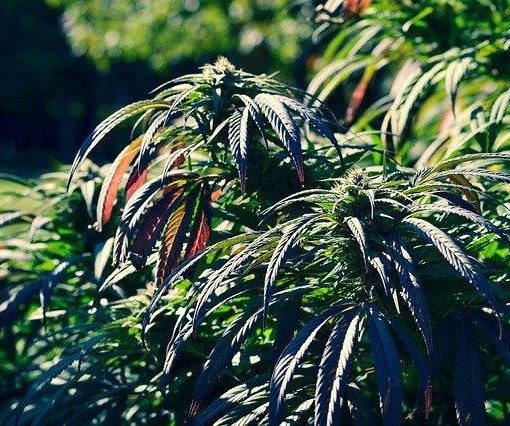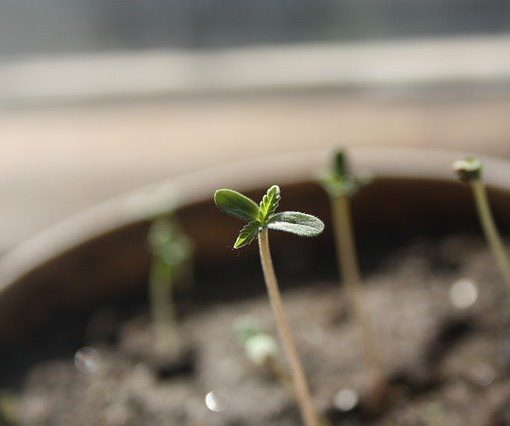CBG (cannabigerol). The very beginning of the other cannabinoids
Before going ahead with this amazing subject, it is important to know some aspects of our dear plant. After reading this article you will understand the enormous importance of CBG.
Cannabis plant biology
Cannabis universe is full of weird words and abbreviations quite difficult to understand. However, they all are very important to fully understand the plant. Some of these words are:
THC
THCA
CBDA
CBDV
CBC
CBCA
CBGA
CBG
And so on.
These words represent the bricks necessary to build everything that happens in a cannabis plant. They are known as cannabinoids. So far 113 cannabinoids are being studied. And among them there is one that highlights for many reasons: CBG, Cannabigerol.
Basically, everything that occurs in a cannabis plant is due to biosynthesis. What is it? Biosynthesis is the combination of the different chemicals compounds in order to create new chemical compounds. When it comes to cannabis, the most important chemicals are:
Geranylpyrophosphate (GPP)
Oivetolic acid (OLA)
These two chemicals are like the bricks used to build a wall. They are the parent molecules of the 113 cannabinoids found in a cannabis plant.
As we said CBG can be considered the “father” of medical marijuana. But, what is it? Why is so important? What are its benefits?
Cannabinoids are chemical compounds that interact with the cannabinoid receptors, CB1 and CB2, located in your brain. We all know THC is the most popular cannabinoid because it is psychoactive. But, little by little, other cannabinoids are becoming more popular due to their different properties. Cannabinoids such as CBD, CBC and CBG, that is gaining more and more fame thanks to its many abilities.
Phytocannabinoids and endocannabinoids
Phytocannabinoids are found in your cannabis plants. You feel them when you use marijuana.
The endocannabinoids are naturally produced in your body.
These are the two main types of cannabinoids. But don’t think the endocannabinoids make you feel high, for example. The endocannabinoids have a very specific function: homeostasis.
Homeostasis
The homeostasis is the tendency of your body to remain in good equilibrium. Equilibrium with the temperature (not too cold not too hot). If it weren’t for the equilibrium your cells would die. But homeostasis is much more than equilibrium between hot and cold. Homeostasis is responsible for the equilibrium between oxygen and carbon dioxide, nutrition balance and so on. And it is the endocannabinoid system the one who governs this perfect balance.
Our body has endocannabinoids enough to maintain the body working perfectly. But these endocannabinoids don’t make you feel high. They simply keep you in homeostasis. But when you consume exocannabinoids (when you smoke marijuana, for example), your body reacts and it is then when you feel high, thanks to the “EXO THC”. But is thanks to your system of endocannabinoids that you feel high (THC) or relax (CBD) after consuming marijuana. Without these endocannabinoids, you would feel nothing after consuming cannabis.
The difference between acid and non-acid cannabinoids
We must difference between acidic and non-acidic cannabinoids. The difference is in the A that defines each one. For example, THC (tetrahydrocannabinol) is the non-acidic form, while THCA (tetrahydrocannabinol acid) is the acidic form. It happens the same with all the cannabinoids: CBD and CBDA and so on.
The acidic form of cannabinoids is in raw cannabis. How does it change to non-acidic cannabinoid? It happens when we heat the plant of cannabis. The heat changes THCA and CBDA in THC and CBD.
Decarboxylation: the key word
Curiously, the acidic form of each cannabinoid, even though is good for your health and body, is not as good as the non-acidic form of the same compound. The chemical process through which an acidic cannabinoid becomes non-acidic through the heat is known as decarboxylation. In order to obtain the best from your weed you must decarboxylate it first using heat.
This is very easy to do when you are smoking or vaping. Another possibility is just baking your raw cannabis in the oven. And remember: the non-acidic form of the cannabinoids is better for your health.
CBGA: the beginning
In the beginning of this article we mentioned two essential chemicals: geranyl pyrophosphate (GPP) and olivetolic acid (OLA). When they get together create all the 113 cannabinoids.
We also mentioned how the acidic cannabinoids become non-acidic using heat. However, there is an important step in between. It is the moment to study CBG.
When it comes to raw cannabis, geranyl pyrophosphate (GPP) and olivetolic acid (OLA) get together with enzymes in the plant to produce the rest of the acidic cannabinoids: THCA, CBDA, CBCA, and so on.
Last week I harvested one of my favorite strains: Mujica Gold. The weed was made up of CBGA, THCA, CBDA, and CBCA among others. But after rolling a joint, I lit it. In other words: I applied heat. Immediately after this, the acids became non-acidic molecules: CBG, THC, CBD, CBC, and the rest of cannabinoids. CBGA can be compared to the stem cells in human body. It is possible to get a remarkable quantity of chemical compounds from it.
CBG (cannabigerol), the non-acidic cannabinoid that comes from CBGA, is obtained after heat has been applied. CBG closest relatives are THC, CBD and CBC. CBG is abounds in hemp. Strains with very high levels of THC contain little CBG. Usually less than 1%. However, those varieties rich in CBD contain much more CBG.
CBG doesn’t get you high
CBG doesn’t get you high. It is completely non-psychoactive. It is similar to CBD. As a matter of fact it is antagonist to THC. Is this bad news? Not at all! In fact, thanks to CBG more than one user has avoided a bad trip.
Medical properties of GBG
Analgesic, antibacterial, anti-convulsive, anti-inflammatory, anti-insomnia, anti-proliferative (it inhibits cancer cell growth), antidepressant, bone stimulant, brain cell stimulant, appetite stimulant.






